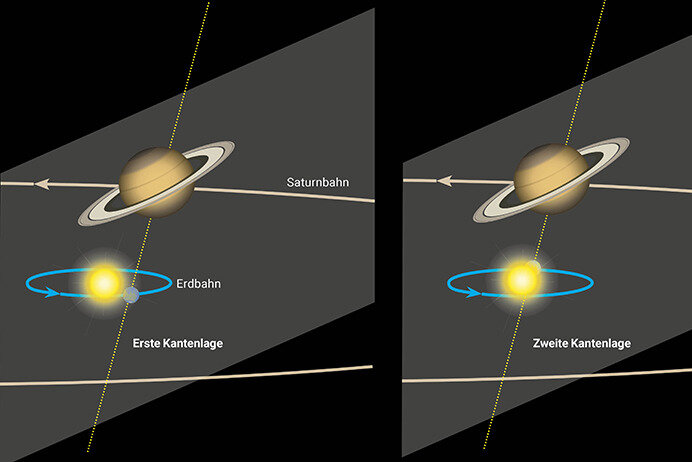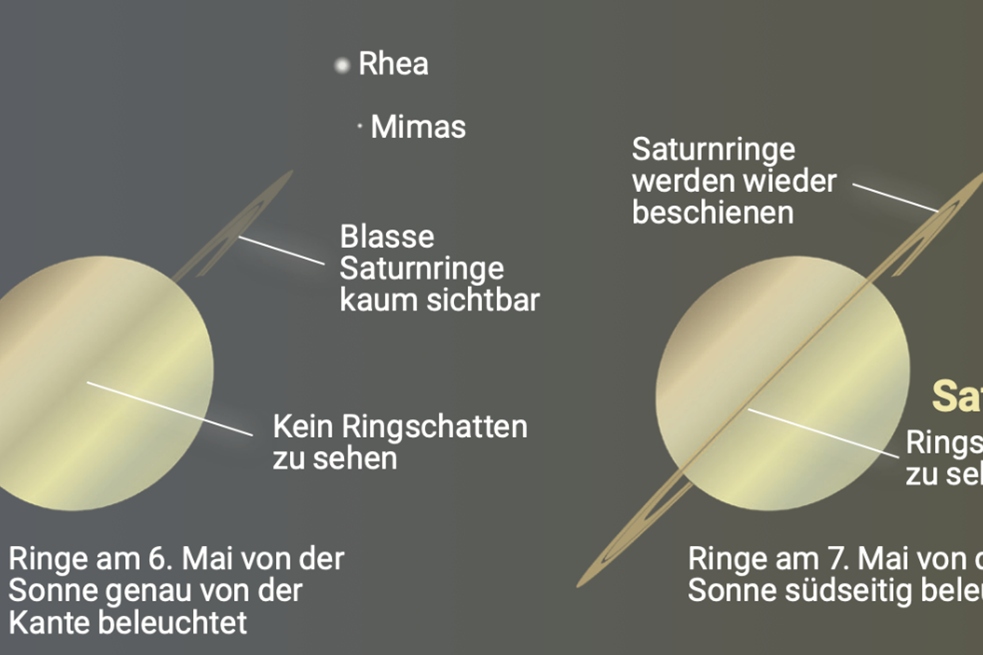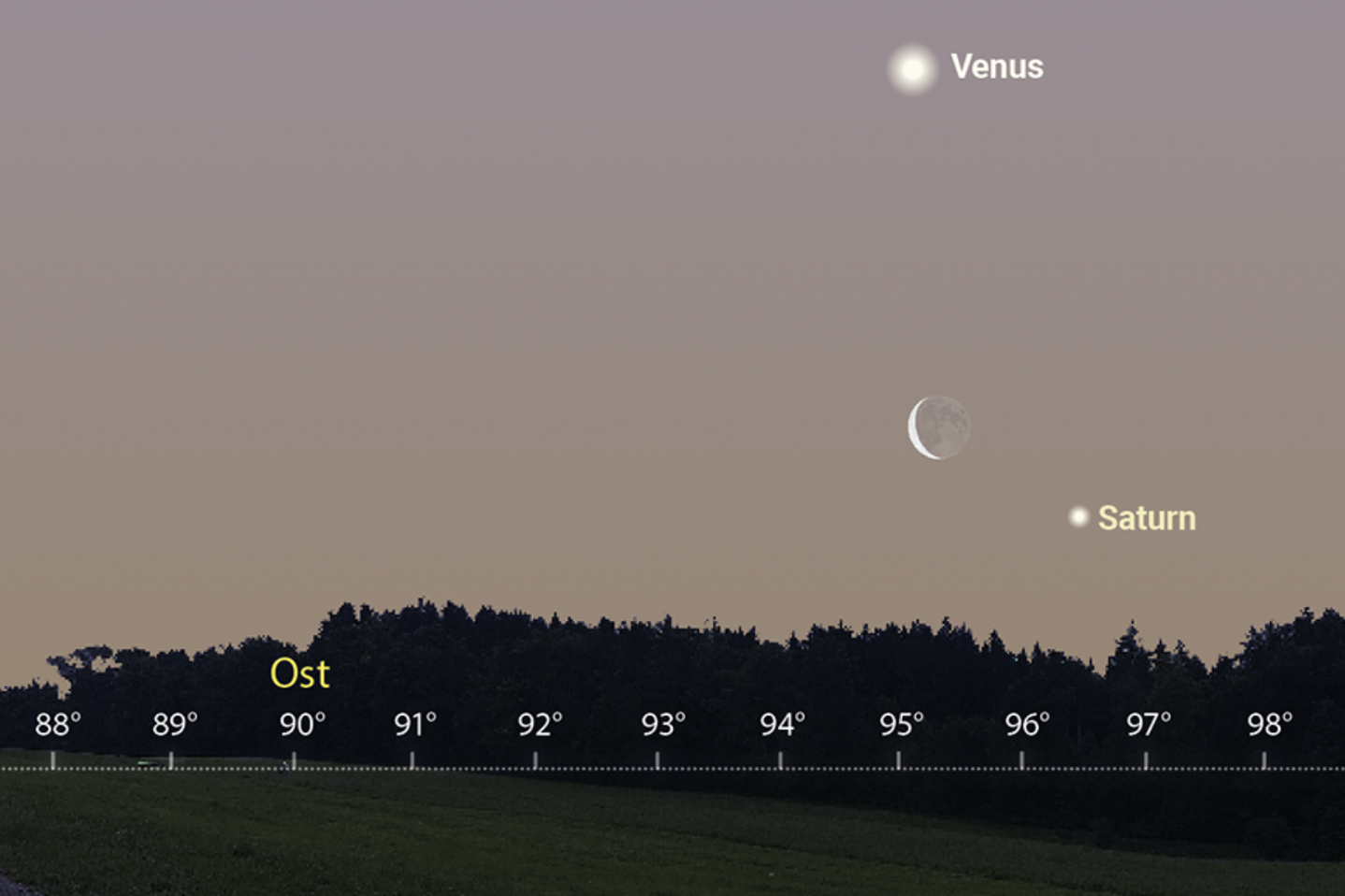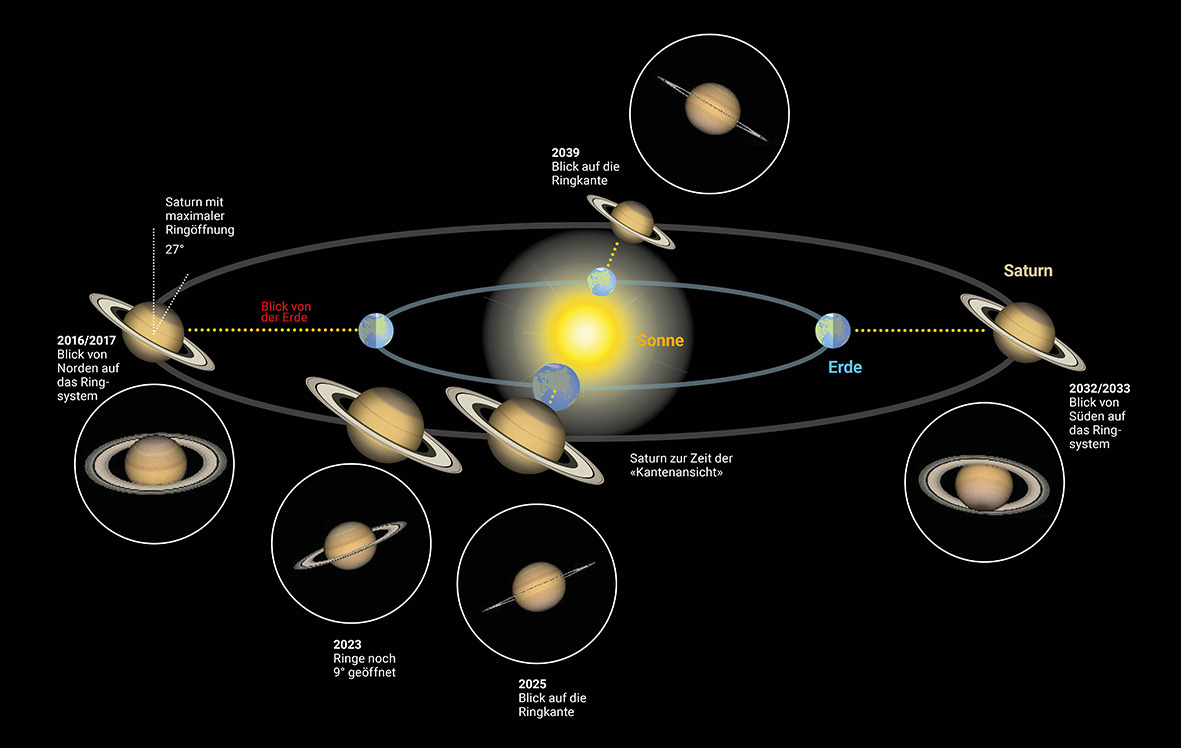
Last 23 March, the Earth crossed Saturn's orbital plane. Unfavourably, the planet was "behind" the sun at this time. Otherwise, we would have been able to see it temporarily without its rings. But when Saturn hesitantly reappears in the morning sky in the last quarter of April, we can see its "landmark" wafer-thin, albeit "backlit"!
Saturn's axis of rotation is inclined 27° to its orbital plane around the sun. If you observe the ringed planet over the years, you can see the slowly changing view of the ring system. In 2016/17, the rings appeared maximally open; we were looking at their northern side from Earth. Since then, the viewing angle has decreased noticeably. In 2023, the rings still appeared 9° wide open, and now they have all but "disappeared". On 23 March 2025, the Earth crossed the plane of Saturn's rings, and as they are only a good 100 m (!) thin despite their enormous size of around 270,000 km (from one visible ring edge to the opposite one), they temporarily disappear completely. Only the fine shadows cast on Saturn's orb would have been visible. Unfortunately, the planet was still practically "behind" the sun (conjunction was on 12 March).
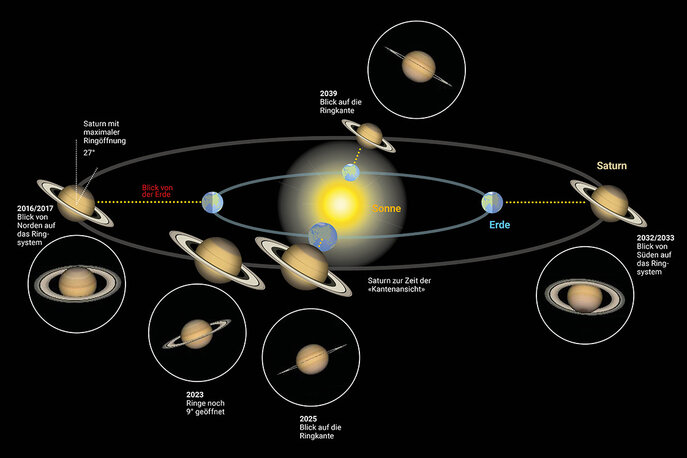
By 6 May, Saturn has already moved 47½° west of the Sun and can be seen for a good three quarters of an hour before sunrise. At around 05:30 CEST, it will be just under 9° high above east to south. If you observe the planet then, you will notice that no shadow of the rings can be seen on the planetary sphere and the rings themselves are only very faintly visible, if at all, as they are illuminated. On the evening of 6 May at 18:28 CEST - Saturn will then be below the horizon - we could see Saturn's rings become bright again; at this moment, the sun will begin to illuminate the ring system at a shallow angle from the south.
The conditions improve as early as May, even if Saturn does not reach a great height due to the ecliptic running quite flat to the eastern horizon. As summer approaches, Saturn rises earlier and can be observed until dawn. In July it rises in the hours around midnight, in August in the evening hours. The best month, however, will be September, as Saturn is in opposition to the sun on the 21st and can be observed throughout the night until sunrise.
